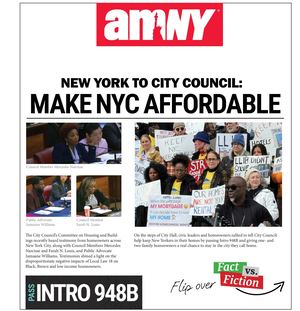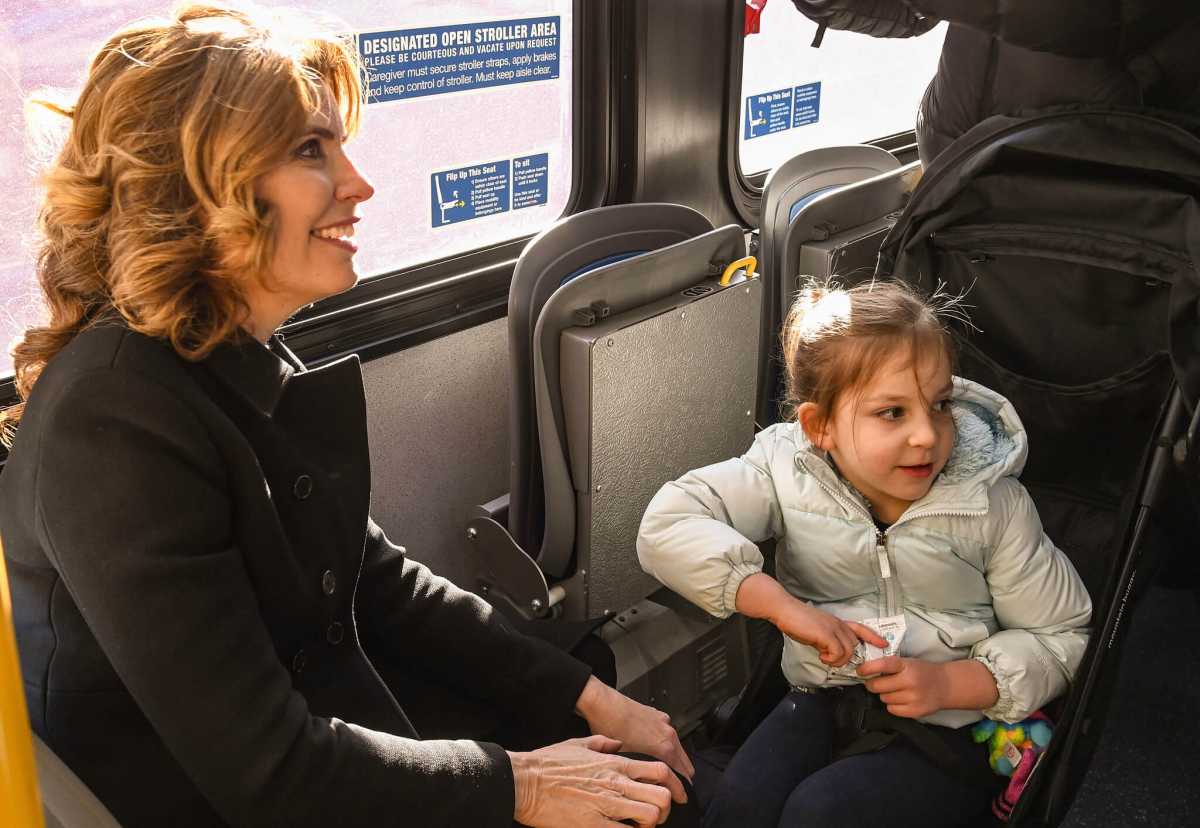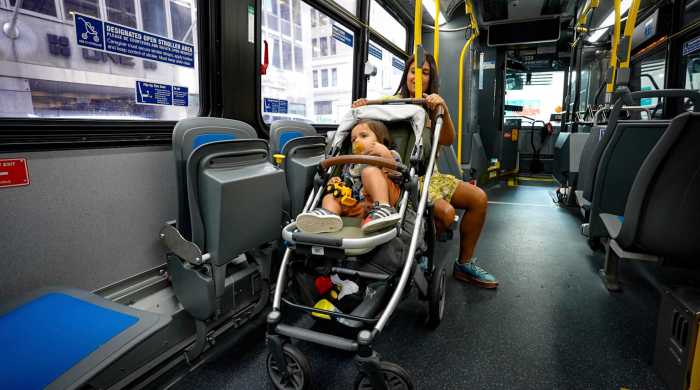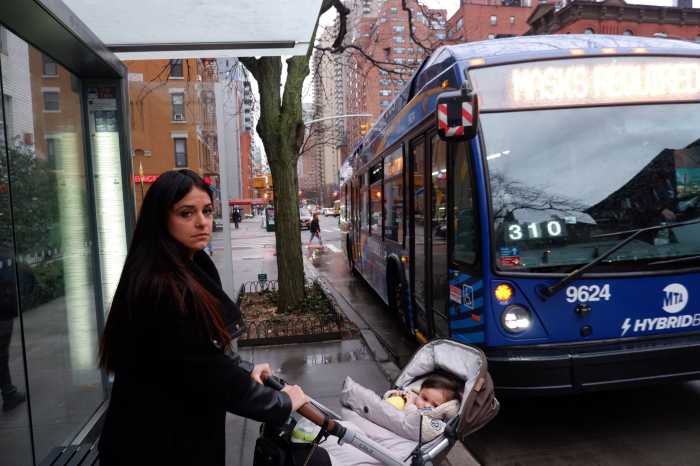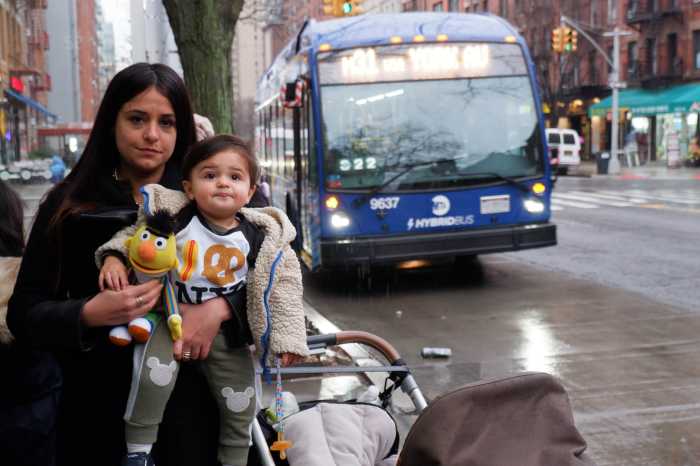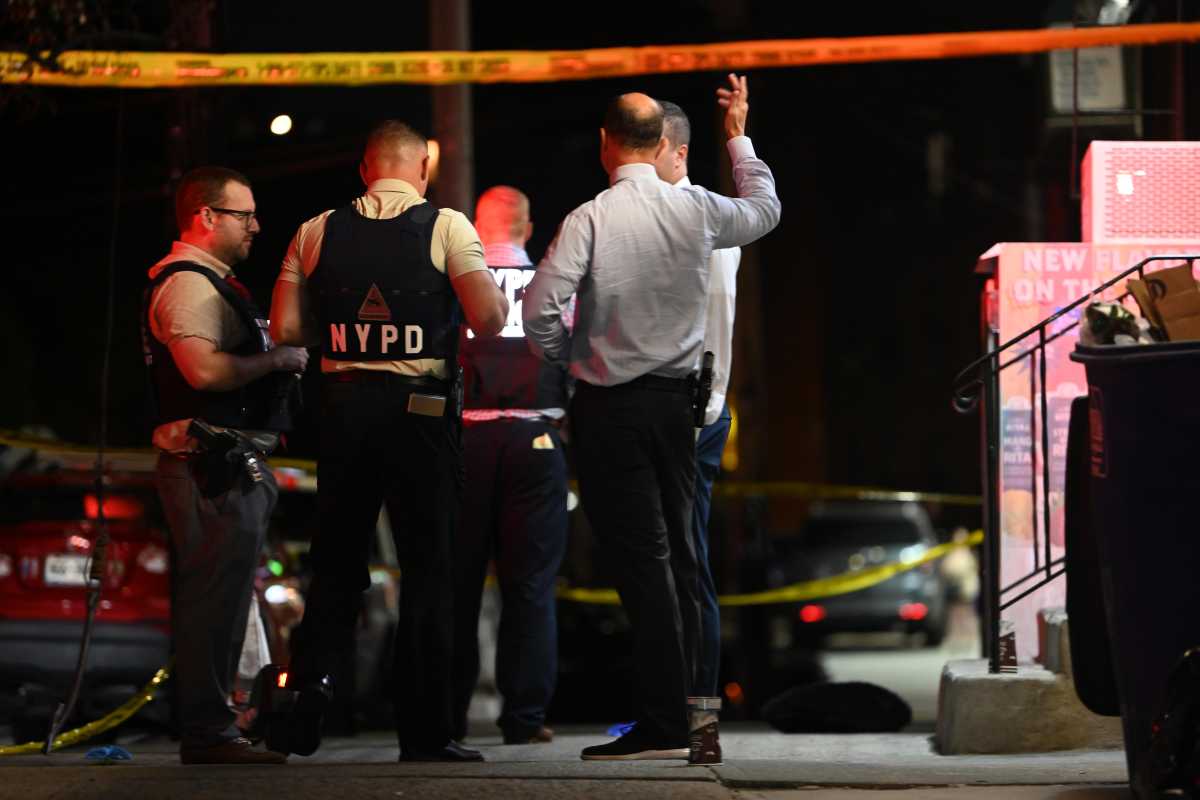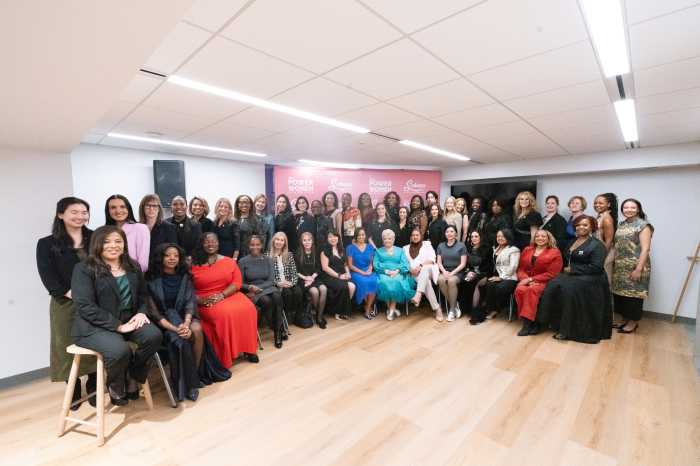The Metropolitan Transportation Authority is expanding its pilot program providing space for strollers on city buses, citing overwhelmingly positive feedback from stakeholders during a four-month trial run.
The program is set to expand to 1,000 buses on lines in all five boroughs, up from the 142 on seven lines under the auspices of the pilot, started in September. The buses, denoted by exterior decals, feature dedicated space for stroller users, made either by removing seats near doors or by folding up collapsible seats.
“This will provide increased coverage and enable us to get even more feedback over the next several months, and determine what our next steps are,” said Frank Annicaro, senior vice president of the MTA’s bus division, at a press conference on the Upper East Side Tuesday.
The new routes to be served by stroller buses have not yet been unveiled.
The pilot commenced after a review of the MTA’s erstwhile ban on unfolded strollers on buses — ostensibly to prevent aisle blockage — by an agency working group, composed of parents, caregivers, disability advocates, and transit workers. It came after months of MTA board meetings populated by enraged moms, deeming MTA buses a “nightmare” for caregivers with children.
Nearly a year later, after intense deliberations between stakeholders and four months of the pilot under its belt, the MTA is declaring it a success. The announcement was a blissful one for many parents, who had previously been forced to collapse their stroller and hold their little one themselves, lest they get kicked off the bus.
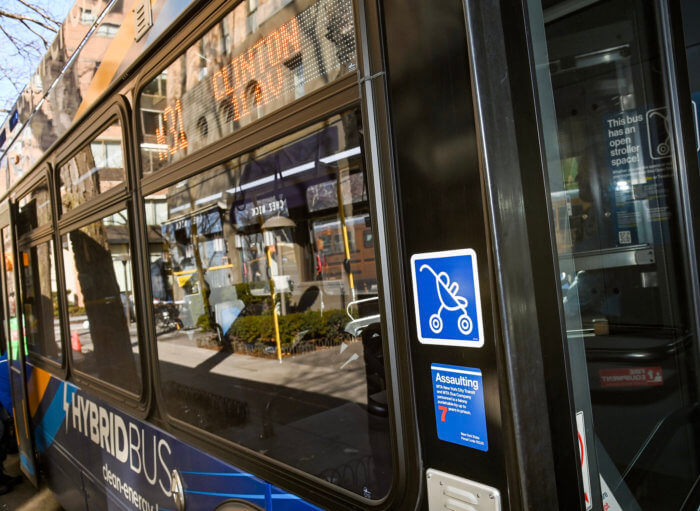
“The bus used to be a mode of transit that caretakers could not physically manage or opted out of, because it was too difficult and unsafe to take children out of the stroller. Parents and caretakers say this pilot is life-changing,” said Christine Yearwood, head of parents’ advocacy group UP-STAND and a member of the working group, at the press conference.
“It gives children so many more opportunities to learn and grow,” Yearwood continued, “to be able to access more city institutions, libraries, community centers, museums, parks, daycare, schools, activities, and medical appointments, safely and with ease. It also allows parents to be part of the city, it gives us choice and opportunity in our work and personal lives. It is a huge improvement in quality of life for us.”
Riders Alliance, the straphangers’ advocacy group, also praised the pilot’s expansion.
“As predicted, permitting open strollers on buses works and welcomes more New Yorkers on board,” said Riders Alliance Executive Director Betsy Plum in a statement. “MTA leaders successfully gathered stakeholder input and piloted the new program on several routes. We’re very pleased to see this inclusive program now opening new routes to strollers in every borough as part of a robust second phase.”
Key among the stakeholders to give the thumbs up were members of the disabled community, who had pushed back on the program fearing it might lead to decreased accessible space on buses for people with disabilities. But the piloted stroller space ultimately did not take away any space already designated for people with disabilities, leading advocates to give their seal of approval.
“They won’t take our space, that was our first priority,” said Elizabeth Valdez, systems advocate at the Brooklyn Center for the Independence of the Disabled and a working group member, in an interview. “And the second one is, if they have their own designated space, then they’re not obstructing the aisle when a wheelchair user has to come in and out.”
Valdez said that both of those issues had been adequately addressed to the point disabled New Yorkers could support the program. “I think it’s great,” she said. “I wish they would now make it for two strollers, the same way they have the space for two wheelchairs.”
The only outstanding unease comes from the unions. Annicaro said at the press conference that feedback from transit employees was mainly positive, though there were some concerns about signage and messaging.
“Last week, I was fortunate to meet with a core group of our operators driving on these seven lines and personally listen to their feedback. It was very positive,” said Annicaro. “Many finding that the new policy actually often sped up the boarding process. They also noted that there were no real complaints from non-stroller customers.”
Nonetheless, a spokesperson for Transport Workers Union Local 100, which represents thousands of rank-and-file transit employees in the five boroughs, said outlying concerns remain as the MTA expands the pilot, particularly on the potential for disputes among riders over the new seating areas — altercations that would likely fall on bus drivers to resolve.
“We remain concerned about this pilot program and will continue to monitor it very closely,” the TWU spokesperson told amNewYork Metro. “There’s the potential for disputes between riders, and other problems, that could lead to Bus Operators getting assaulted.”
